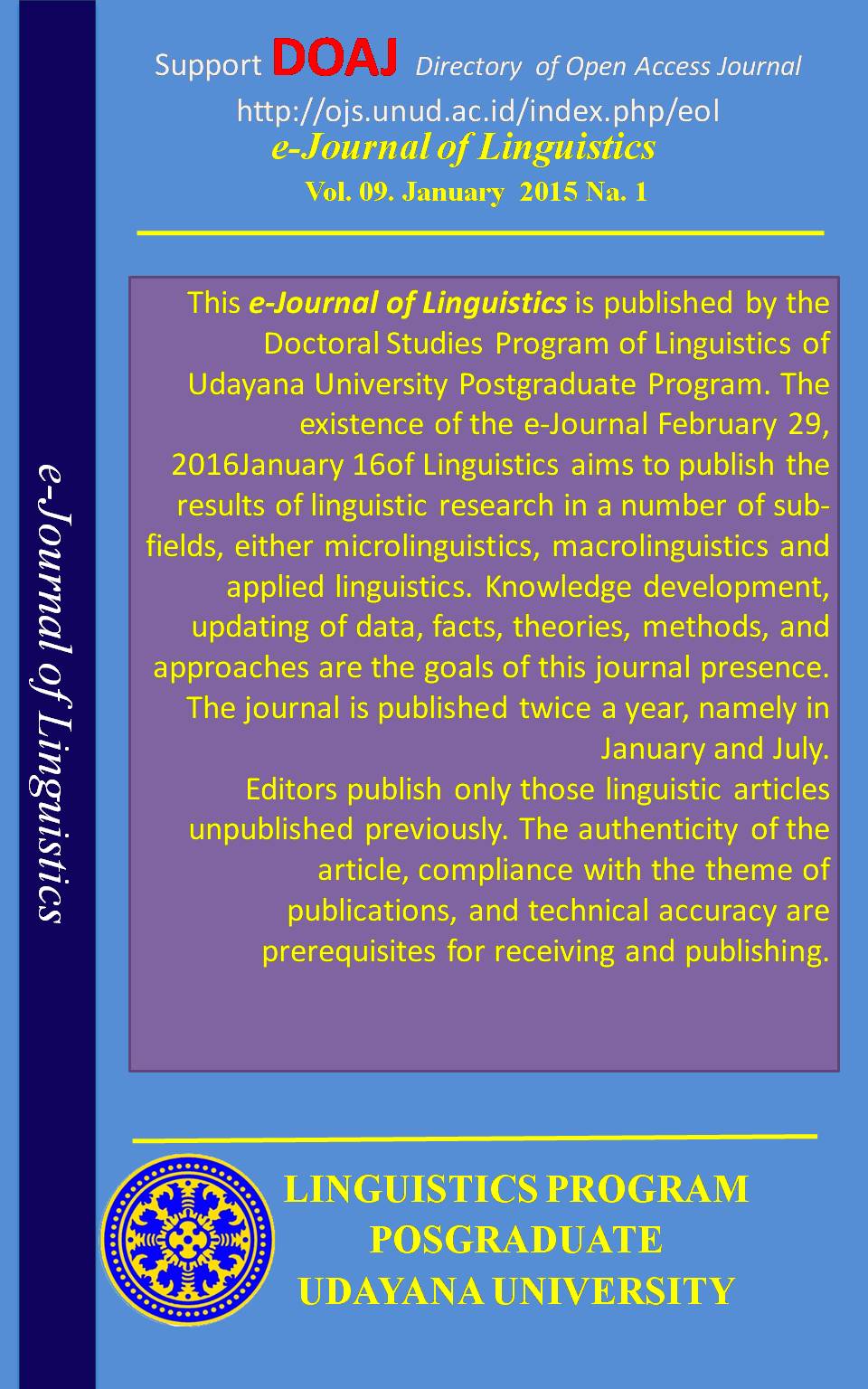NOUN DERIVATION OF THE TYPICAL MINAHASA FOOD AND BEVERAGE NAMES
Abstract
Derivation of the name of typical Minahasa food and beverage is a change or replacement of the word class of verbs, adverbs, and adjectives into nouns. It occurs through the process of compounding, affixation, and reduplication. Free morpheme which appears is ransak, tei, tu'tu, tape, segor, sende ', rica, fresh, rukus. Conversely, some morphemes or bound forms (affixes) are the prefix /pe-/,/wa-/, and /ko-/ ; infix /-in-/ ; suffix /-en/, and confixes /-in- + -an/ and /ka- + -an/ . Prefixes /pe-/, /wa-/, and /ko-/ ; infix /-in-/ ; sufi x-en/, andconfixes /-in- + -an/ occur in the formation of derivational words of food, while drinks contain two morphemes (affixes), the infix / -in- / and confix (ka + -an). Thus, the derivation of the typical Minahasa food naming is called derivational affixes such as derivational prefix, infix, and confix. Meanwhile, derivational infix, and confix occur in a typical Minahasa drink. Empty derivation is not found in the typical Minahasa food and beverage since a single form, for example, pangi, sa’ut, paniki, kawok, dan sopi have a meaning that does not change the word class. In addition, the characteristics of the structure of itscompounding: root + base (base + roots), that have a sense of the endocentric and exocentric compound words. Endocentric ompounding is the most frequent.Downloads
Keywords

This work is licensed under a Creative Commons Attribution 4.0 International License











